Author Archives: Dani Grant
Author Archives: Dani Grant

Today we are introducing Spectrum, which brings Cloudflare’s security and acceleration to the whole spectrum of TCP ports and protocols for our Enterprise customers. It’s DDoS protection for any box, container or VM that connects to the internet; whether it runs email, file transfer or a custom protocol, it can now get the full benefits of Cloudflare. If you want to skip ahead and see it in action, you can scroll to the video demo at the bottom.
The core functionality of Spectrum is its ability to block large DDoS attacks. Spectrum benefits from Cloudflare’s existing DDoS mitigation (which this week blocked a 900 Gbps flood). Spectrum’s DDoS protection has already been battle tested. Just soon as we opened up Spectrum for beta, Spectrum received its first SYN flood.
One of Spectrum's earliest deployments was in front of Hypixel’s infrastructure. Hypixel runs the largest minecraft server, and because gamers can be - uh, passionate - they were one of the earliest targets of the terabit-per-second Mirai botnet. “Hypixel was one of the first subjects of the Mirai botnet DDoS attacks and frequently receives large attacks. Before Spectrum, we had to rely on unstable services & techniques Continue reading


Photo from Wikimedia Commons
Today we’re introducing Argo Tunnel, a private connection between your web server and Cloudflare. Tunnel makes it so that only traffic that routes through Cloudflare can reach your server.
You can think of Argo Tunnel as a virtual P.O. box. It lets someone send you packets without knowing your real address. In other words, it’s a private link. Only Cloudflare can see the server and communicate with it, and for the rest of the internet, it’s unroutable, as if the server is not even there.
This type of private deployment used to be accomplished with GRE tunnels. But GRE tunnels are expensive and slow, they don’t really make sense in a 2018 internet.
GRE is a tunneling protocol for sending data between two servers by simulating a physical link. Configuring a GRE tunnel requires coordination between network administrators from both sides of the connection. It is an expensive service that is usually only available for large corporations with dedicated budgets. The GRE protocol encapsulates packets inside other packets, which means that you will have to either lower the MTU of your origin servers, or have your router do Continue reading

We’re at the EDGE of our seats, about to LANd in Austin, Texas in route for SXSW. (TKIP, hip, hooray!)
ARP you going to be there? We R going to have three epoch sessions by Cloudflare speakers. Ifdown, seems apt you could SELECT to JOIN. Cat make it? Not a bg deal, wget it (though it mega hertz we won’t C you). All the audio from the three sessions will be recorded, you can listen to the cd.
WPS! I almost forgot to tel(net) you whois going to be there, and WAN and where to go.
On Friday, March 9, I’m moderating a panel with Emily Schechter from Google, Aaron DeVera from Deloitte and Gabe Kassel from eero about how Wi-Fi networks work and WEP happens when attackers coax people into joining insecure networks. It’s at Salon K in the Hilton at 3:30PM.
On Sunday the 11th, Nitin Rao is on a panel with Heather West from Mozilla, Stefan Lederer from Bitmovin and Fred Benenson from Unlimited Liability Corporation LLC about the impact of the recent revocation of Net Neutrality rules on online video streaming. It’s at 11AM at Salon J in the Continue reading
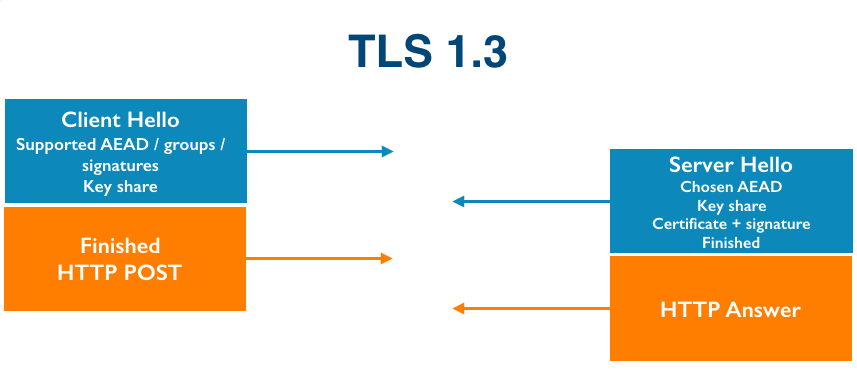
As I’m writing this, four DDoS attacks are ongoing and being automatically mitigated by Gatebot. Cloudflare’s job is to get attacked. Our network gets attacked constantly.
Around the fall of 2016, we started seeing DDoS attacks that looked a little different than usual. One attack we saw around that time had traffic coming from 52,467 unique IP addresses. The clients weren’t servers or desktop computers; when we tried to connect to the clients over port 80, we got the login pages to CCTV cameras.
Obviously it’s important to lock down IoT devices so that they can’t be co-opted into evil botnet armies, but when we talk to some IoT developers, we hear a few concerning security patterns. We’ll dive into two problematic areas and their solutions: software updates and TLS.
With PCs, the end user is ultimately responsible for securing their devices. People understand that they need to update their computers and phones. Just 4 months after Apple released iOS 10, it was installed on 76% of active devices.
People just don’t know that they are supposed to update IoT things like they are supposed to update their computers because they’ve never had to update things Continue reading

As I’m writing this, four DDoS attacks are ongoing and being automatically mitigated by Gatebot. Cloudflare’s job is to get attacked. Our network gets attacked constantly.
Around the fall of 2016, we started seeing DDoS attacks that looked a little different than usual. One attack we saw around that time had traffic coming from 52,467 unique IP addresses. The clients weren’t servers or desktop computers; when we tried to connect to the clients over port 80, we got the login pages to CCTV cameras.
Obviously it’s important to lock down IoT devices so that they can’t be co-opted into evil botnet armies, but when we talk to some IoT developers, we hear a few concerning security patterns. We’ll dive into two problematic areas and their solutions: software updates and TLS.
With PCs, the end user is ultimately responsible for securing their devices. People understand that they need to update their computers and phones. Just 4 months after Apple released iOS 10, it was installed on 76% of active devices.
People just don’t know that they are supposed to update IoT things like they are supposed to update their computers because they’ve never had to update things Continue reading


Phishing is the absolute worst.
Unfortunately, sometimes phishing campaigns use Cloudflare for the very convenient, free DNS. To be clear –– there’s a difference between a compromised server being leveraged to send phishing emails and an intentionally malicious website dedicated to this type of activity. The latter clearly violates our terms of service.
In the past, our Trust and Safety team would kick these intentional phishers off the platform, but now we have a new trick up our sleeve and a way for their malicious emails to mysteriously disappear into the ether.
SMTP - the protocol used for sending email - was finalized in 1982, when it was just a small community online. Many of them knew and trusted each other, and so the protocol was built entirely on trust. In an SMTP message, the MAIL FROM field can be arbitrarily defined. That means you could send an email from any email address, even one you don’t own.
This is great for phishers, and bad for everyone else.
The solution to prevent email spoofing was to create the Sender Policy Framework (SPF). SPF allows the domain owner to specify which servers are allowed to send Continue reading
Tomorrow is Thanksgiving in the United States. It’s a holiday for getting together with family characterized by turkey dinner and whatever it is that happens in American football. While celebrating with family is great, if you use a computer for your main line of work, sometimes the conversation turns to how to setup the home wifi or can Russia really use Facebook to hack the US election. Just in case you’re a geek who finds yourself in that position this week, we wanted to give you something to play with. To that end, we’re opening the Warp beta to all Cloudflare users. Feel free to tell your family there’s been an important technical development you need to attend to immediately and enjoy!
Warp allows you to expose a locally running web server to the internet without having to open up ports in the firewall or even needing a public IP address. Warp connects a web server directly to the Cloudflare network where Cloudflare acts as your web server’s network gateway. Every request reaching your origin must travel to the Cloudflare network where you can apply rate limits, access policies and authentication before the request hits your Continue reading
Ubuntu us are doing the round trip! It’s time to live - WAN you arrive at GHC, come meet us and say HELO (we love GNU faces, we’ll be very api to meet you). When you’re exhausted like IPv4, git over to the Cloudflare corner to reboot –– we’ll have chargers and Wi-Fi (it’s not a SYN to REST). R booth can be your ESC. Then Thursday morning we’re hosting a breakfast bash with Zendesk –– it will be quite the Assembly, you should definitely Go, compile a bowl of serial, drink a bit of CIDR or a cup of tee.
I’m also speaking at 1:30PM on Wednesday in OCCC W414 hashing out encryption and updates for IoT –– DES should be a fun session.
ACK! I did NAT tell you how to find us. Check for sum women in capes a few hops away from the booths with the lava LAMP stack. I'm the one with cURLs.
In D air! Excited to LANd. C you soon.


I work at a company whose job it is to be attacked. As I’m writing this, an automatic mitigation is fighting two ongoing DDoS attacks. Any machine that’s publicly routable on the internet today can be a vector for attack, and that’s a problem.
Today we want to turn the tables and give you a new way of exposing services to the internet without having them be directly, publicly routable. Meet Cloudflare Warp.
 CC BY-SA 2.0 image by Christian Ortiz
CC BY-SA 2.0 image by Christian Ortiz
Cloudflare internally runs about 4,000 containers that make up about 1.5K services and applications. Some of these containers need to network with other local containers, and others need to accept connections over the wire.
Every devops engineer knows that bad things happen to good machines, and so our platform operations team tries to hide servers altogether from the internet. There are several ways to do this:
These can be complicated or time consuming, yet none of them are Continue reading
Since March 30, 2017, Cloudflare has been providing DNS Anycast service as additional F-Root instances under contract with ISC (the F-Root operator).
F-Root is a single IPv4 address plus a single IPv6 address which both ISC and Cloudflare announce to the global Internet as a shared Anycast. This document reviews how F-Root has performed since that date in March 2017.
The DNS root servers are an important utility provided to all clients on the Internet for free - all F root instances including those hosted on the Cloudflare network are a free service provided by both ISC and Cloudflare for public benefit. Because every online request begins with a DNS lookup, and every DNS lookup requires the retrieval of information stored on the DNS root servers, the DNS root servers plays an invaluable role to the functioning of the internet.
At Cloudflare, we were excited to work with ISC to bring greater security, speed and new software diversity to the root server system. First, the root servers, because of their crucial role, are often the subject of large scale volumetric DDoS attacks, which Cloudflare specializes in mitigating (Cloudflare is currently mitigating two concurrently ongoing DDoS attacks as we write this). Continue reading
Cloudflare runs 3,588 containers, making up 1,264 apps and services that all need to be able to find and discover each other in order to communicate -- a problem solved with service discovery.
You can use Cloudflare for service discovery. By deploying microservices behind Cloudflare, microservices’ origins are masked, secured from DDoS and L7 exploits and authenticated, and service discovery is natively built in. Cloudflare is also cloud platform agnostic, which means that if you have distributed infrastructure deployed across cloud platforms, you still get a holistic view of your services and the ability to manage your security and authentication policies in one place, independent of where services are actually deployed.

Service locations and metadata are stored in a distributed KV store deployed in all 100+ Cloudflare edge locations (the service registry).

Services register themselves to the service registry when they start up and deregister themselves when they spin down via a POST to Cloudflare’s API. Services provide data in the form of a DNS record, either by giving Cloudflare the address of the service in an A (IPv4) or AAAA (IPv6) record, or by providing more metadata like transport protocol and port in an SRV record.
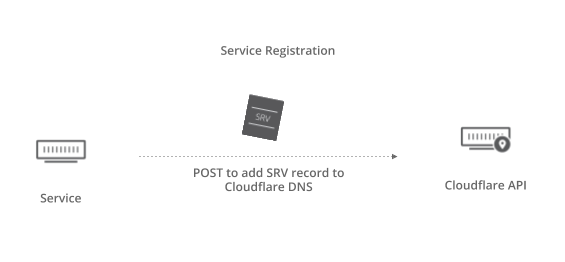
At Cloudflare we believe in being good to the Internet and good to our customers. By moving on from the legacy world of IPv4-only to the modern-day world where IPv4 and IPv6 are treated equally, we believe we are doing exactly that.
"No matter what happens in life, be good to people. Being good to people is a wonderful legacy to leave behind." - Taylor Swift (whose website has been IPv6 enabled for many many years)
Starting today with free domains, IPv6 is no longer something you can toggle on and off, it’s always just on.

Cloudflare has always been a gateway for visitors on IPv6 connections to access sites and applications hosted on legacy IPv4-only infrastructure. Connections to Cloudflare are terminated on either IP version and then proxied to the backend over whichever IP version the backend infrastructure can accept.

That means that a v6-only mobile phone (looking at you, T-Mobile users) can establish a clean path to any site or mobile app behind Cloudflare instead of doing an expensive 464XLAT protocol translation as part of the connection (shaving milliseconds and conserving very precious battery life).
That IPv6 gateway is set by a simple Continue reading

Have you noticed something new in your Cloudflare analytics dashboard this morning? You can now see detailed DNS analytics for your domains on Cloudflare.
If you want to skip to the punch and start exploring, go check it out here. Otherwise, hop on the DNS magic school bus - and let us show you all the neat stats in your now-available DNS analytics.
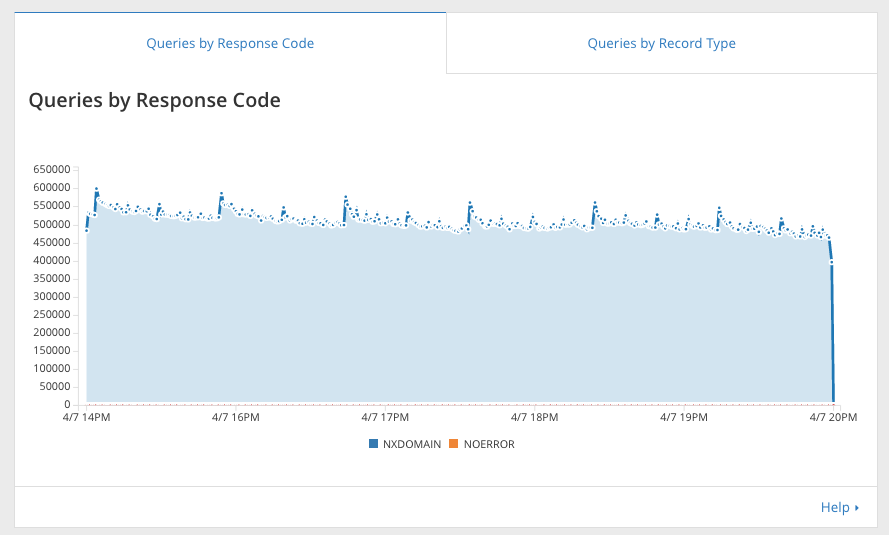
At the top of the DNS analytics dashboard you can see your DNS traffic health. This “Queries by Response Codes” graph breaks down queries by what response code Cloudflare DNS answered to the visitor. Like HTTP response codes, DNS response codes give an indication of what is happening behind the scenes. Mostly you will just see NOERROR, the HTTP 200 of DNS response codes, and NXDOMAIN, the HTTP 404 of DNS response codes. NXDOMAIN is particularly interesting - what are people querying for that doesn’t exist?
If you are an enterprise customer and you want to know what all the NXDOMAIN queries are, just scroll down a little bit where we show you the top queries for your domain and top queries for Continue reading
This is a guest post by Gabe Kassel, Product Manager for Embedded Software at eero.

Relying on a single wireless router to provide internet in every room of the home is like expecting a single light bulb to illuminate the entire house. It’s physics - WiFi radio waves don’t travel through walls or objects easily. The eero Home WiFi System is a new take on home connectivity, bucking the trend of one high-powered device in the center of the home. Instead, eero uses multiple access points that talk to each other via our proprietary mesh technology -- TrueMesh -- to spread coverage and a high throughput connection throughout a home.
eero’s hardware - its distributed access point system - solves the problem of spreading a consistent, stable WiFi signal in a home. But hardware is only part of the puzzle. On the backend of eero’s technology, we face different challenges: how do we build a highly available, high performance infrastructure that’s able to communicate with each eero device? We’ve discussed parts of our architecture previously, but we haven’t yet explored into how we use Cloudflare to eliminate one “single-point-of-failure” in our architecture.
eero Continue reading
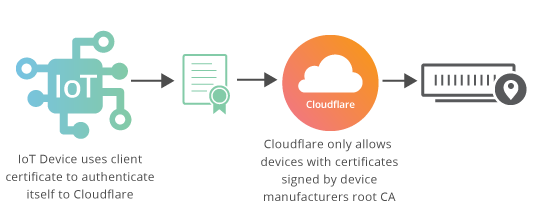
In a traditional TLS handshake, the client authenticates the server, and the server doesn’t know too much about the client. However, starting now, Cloudflare is offering enterprise customers TLS with client authentication, meaning that the server additionally authenticates that the client connecting to it is authorized to connect.
TLS Client Authentication is useful in cases where a server is keeping track of hundreds of thousands or millions of clients, as in IoT, or in a mobile app with millions of installs exchanging secure information. For example, an IoT company can issue a unique client certificate per device, and then limit connections to their IoT infrastructure to only their devices by blocking connections where the client doesn’t present a certificate signed by the company’s certificate authority.
Or in the case of a mobile banking app, where the bank wants to ensure customers’ secure financial data doesn’t get stolen by bots spoofing their mobile app, they can issue a unique certificate to every app install and in the TLS handshake validate requests are coming from their mobile app. Client authentication is also useful for VPNs, enterprise networks or staging sites, where corporations and developers need to lock down connections to only laptops Continue reading
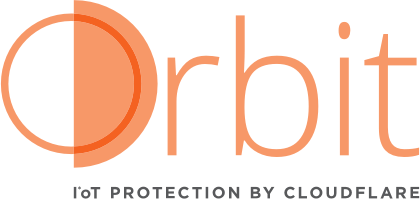
In October, we wrote about a 1.75M rps DDoS attack we mitigated on our network, launched by 52,467 unique IP’s, mostly hacked CCTV cameras.
We continued to see more IoT devices in DDoS attacks, and so we started to put together a security solution to protect the devices from becoming part of the botnet in the first place. Today we’re announcing it: Cloudflare Orbit.
As we talked to IoT companies, over and over again we heard the same thing. In the consumer electronics space, IoT manufacturers were telling us that they were shipping patches to their devices, but their end users didn’t always download and install them. (Reserve your judgment, how many times have you pressed ignore when your phone asked you to update its operating system?) In the industrial control, medical and automotive spaces, where devices are used in life-critical functions, we heard a different story. Even if someone wanted to apply a patch, it just wasn’t that easy. For example, even if the manager of a nuclear power plant wants to update software on their thermostats, shutting down operations long enough to do that means the update has to Continue reading

We’ve been working with registrars and registries in the IETF on making DNSSEC easier for domain owners, and over the next two weeks we’ll be starting out by enabling DNSSEC automatically for .dk domains.
Before we get into the details of how we've improved the DNSSEC experience, we should explain why DNSSEC is important and the function it plays in keeping the web safe.
DNSSEC’s role is to verify the integrity of DNS answers. When DNS was written in the early 1980’s, it was only a few researchers and academics on the internet. They all knew and trusted each other, and couldn’t imagine a world in which someone malicious would try to operate online. As a result, DNS relies on trust to operate. When a client asks for the address of a hostname like www.cloudflare.com, without DNSSEC it will trust basically any server that returns the response, even if it wasn’t the same server it originally asked. With DNSSEC, every DNS answer is signed so clients can verify answers haven’t been manipulated over transit.
If DNSSEC is so important, why do so few domains support it? First, for a domain to Continue reading
Cloudflare has been a long time supporter of AMP, an open-source markup language 1.5 billion web pages are using to accelerate their mobile web performance. Cloudflare runs Ampersand, the only alternative to Google’s AMP cache, and earlier this year we launched Accelerated Mobile Links, a way for sites on Cloudflare to open external links on their site in AMP format, as well as Firebolt, leveraging AMP to speed up ad performance.
![]()
One of the biggest challenges developers face in converting their web pages to AMP is testing their AMP pages for valid AMP syntax before deploying. It's not enough to make the templates work at dev time, you also need to validate individual pages before they’re published. Imagine, for example, a publishing company where content creators who are unfamiliar with AMP are modifying pages. Because the AMP markup language is so strict, one person adding an interactive element to a page can all of a sudden break the AMP formatting and stop the page from validating.
We wanted to make it as easy as possible to move webpages and sites to AMP so we built an AMP linter API for developers to check that their Continue reading

Over the last six years, we’ve built the tooling, infrastructure and expertise to run a DNS network that handles our scale - we’ve answered a few million DNS queries in the few seconds since you started reading this.
DNS is the backbone of the internet. Every email, website visit, and API call ultimately begins with a DNS lookup. Internet is built on DNS, so every hosting company, registrar, TLD operator, and cloud provider must be able to run reliable DNS.
Last year CloudFlare launched Virtual DNS, providing DDoS mitigation and a strong caching layer of 100 global data centers to those running DNS infrastructure.
Today we’re expanding that offering with two new features for an extra layer of reliability: Serve Stale and DNS Rate Limiting.
Virtual DNS sits in front of your DNS infrastructure. When DNS resolvers lookup answers on your authoritative DNS, the query first goes to CloudFlare Virtual DNS. We either serve the answer from cache if we have the answer in cache, or we reach out to your nameservers to get the answer to respond to the DNS resolver.
Even if your DNS servers are down, Virtual DNS can now answer on your behalf Continue reading

Since CloudFlare launched Page Rules in 2012, our Free, Pro and Business users have been asking for a way to get more Page Rules without committing to the next plan up. Starting today, anyone on CloudFlare can add 5 additional Page Rules for just $5/month.
Page Rules allows you to fine tune your site speed and to apply CloudFlare’s wide range of features to specific parts of your site. Page Rules are also accessible over our API, so you can integrate them into your build process or sync them across your domains.
To help you get the most out of Page Rules, we’re also launching a tutorial site that features videos to help you setup Page Rules for specific content management systems like WordPress, Magento and Drupal, and for specific goals like optimizing your website's speed, increasing security, and saving on your bandwidth costs.